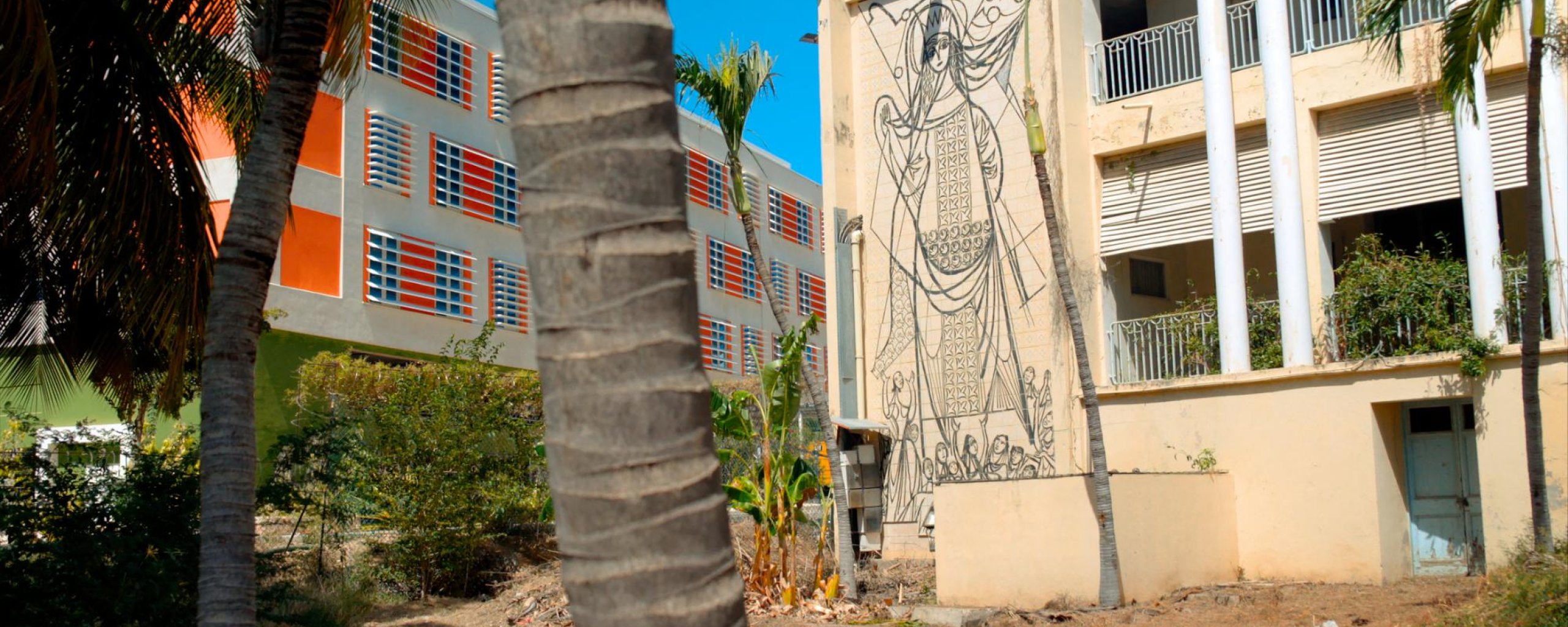
In this presentation at the Art Depot, see how Charles Eyck (1897-1983) developed from a lyrical-baroque artist to a modernist with an expressive visual language in the 1950s.
Around 1952, a considerable change in style occurs in Charles Eyck's work, which partly coincides with his stay in Curaçao (1952-1953). He switched from his narrative, lyrical-baroque style to a more modernist, expressive imagery. After World War II, abstraction enters the art world, but Eyck continues to work figuratively. For new forms of expression, he looks mainly to Picasso's Cubist line drawings and the Expressionists' imagery: areas of color, little depth and stylized figures in a deliberately simple style.
The difference is evident in the two portraits of his daughter Anne-Margit, who was nicknamed "Bimba": the 1939 work is very different in style and appearance from the 1956 painting "Girl with Cat.
Heerlen
Heerlen and the mining region of the time played a prominent role in Charles Eyck's work. Several churches in the region feature his paintings, sculptures and stained glass windows. Eyck's work was regularly exhibited at the Heerlen Town Hall. In 1954, work he made in Curaçao was shown, complemented by painted ceramics and lithography. And in 1957 an exhibition was held in honor of his sixtieth birthday. The Heerlen art collection contains several works by Eyck, including a portrait of Mayor Marcel van Grunsven, the large canvas Militia and a preliminary study of the inaugural portrait of Queen Juliana. For the Council House, he made a proposal for a mural intended for the civic hall, which, however, was not executed. Both the portrait of the mayor and the actual inauguration painting were part of the Dutch entry for the first São Paulo Biennale in Brazil in 1951. The difference in painting style before and after 1952 is also evident in these works.
St. Pancratius Church
Between 1940 and 1942, Eyck painted four vaults in St. Pancratius Church. In the transept arms he painted biblical scenes. With his Resurrection and Ascension of Christ, Eyck completed the series of five glorious mysteries of the rosary already begun by other church painters. A bomb attack on New Year's Eve 1945 caused considerable damage to the church. After provisional repairs, it proved necessary to replace the vaults in the nave in the 1950s, resulting in the loss of Eyck's paintings there. What remains are three 1939 preliminary studies of apostle heads in the collection of Museum Valkenburg.
Charles Eyck (Art Depot): from baroque to expressionism
- April 4 to September 14, 2025
- Tue-Sun 12:00 - 5:00 p.m.; closed during holidays
- SCHUNCK Glass Palace